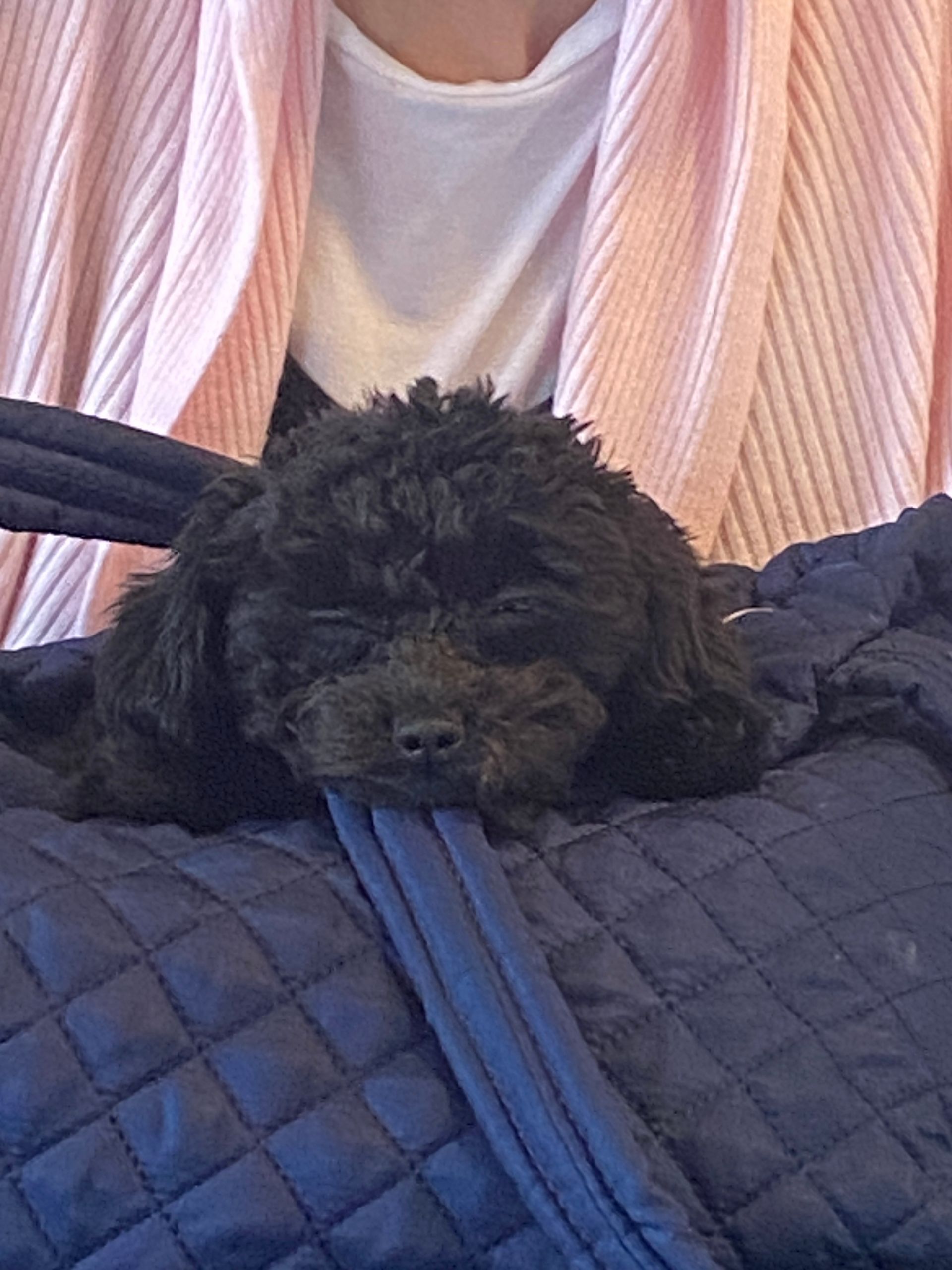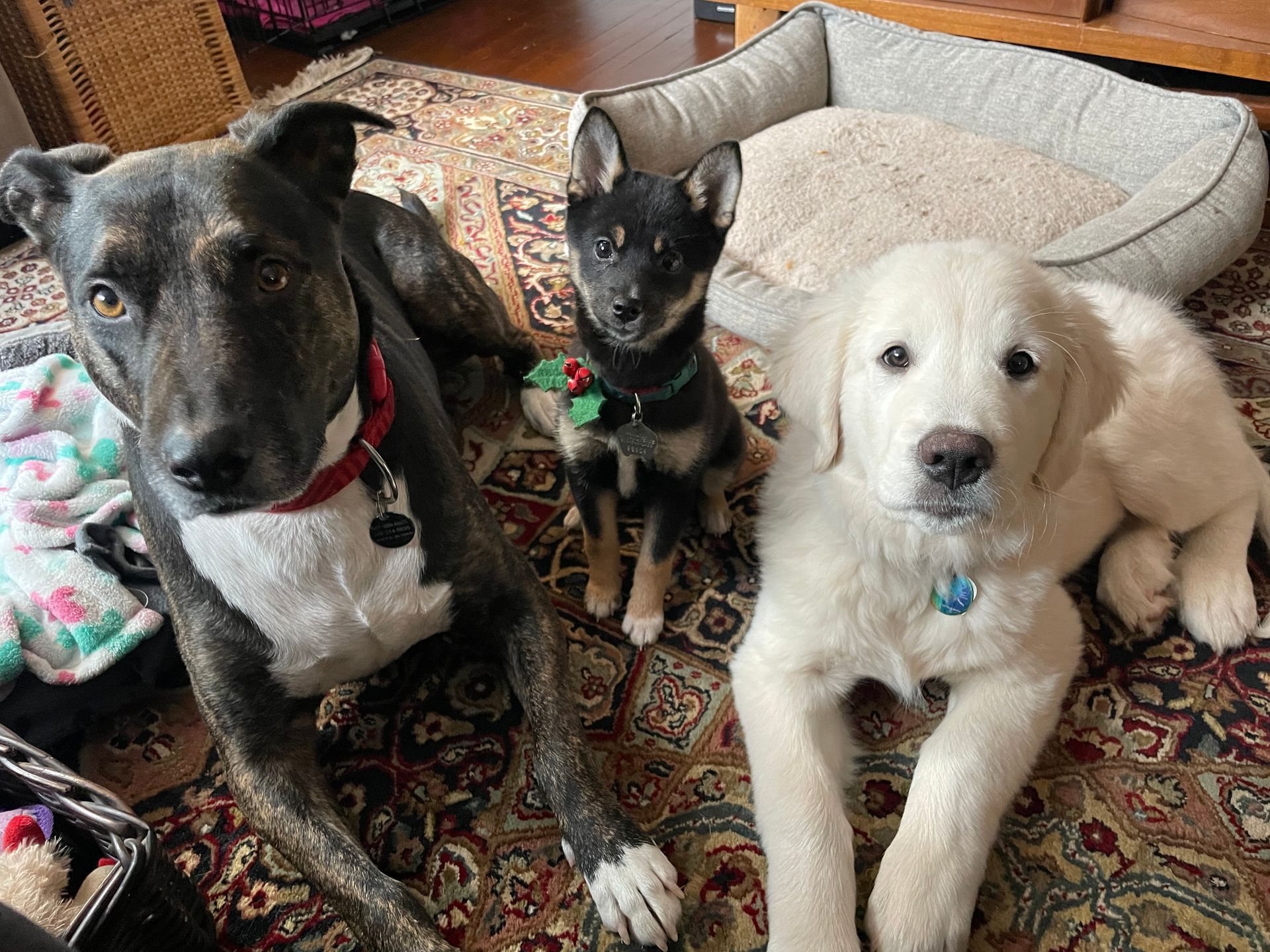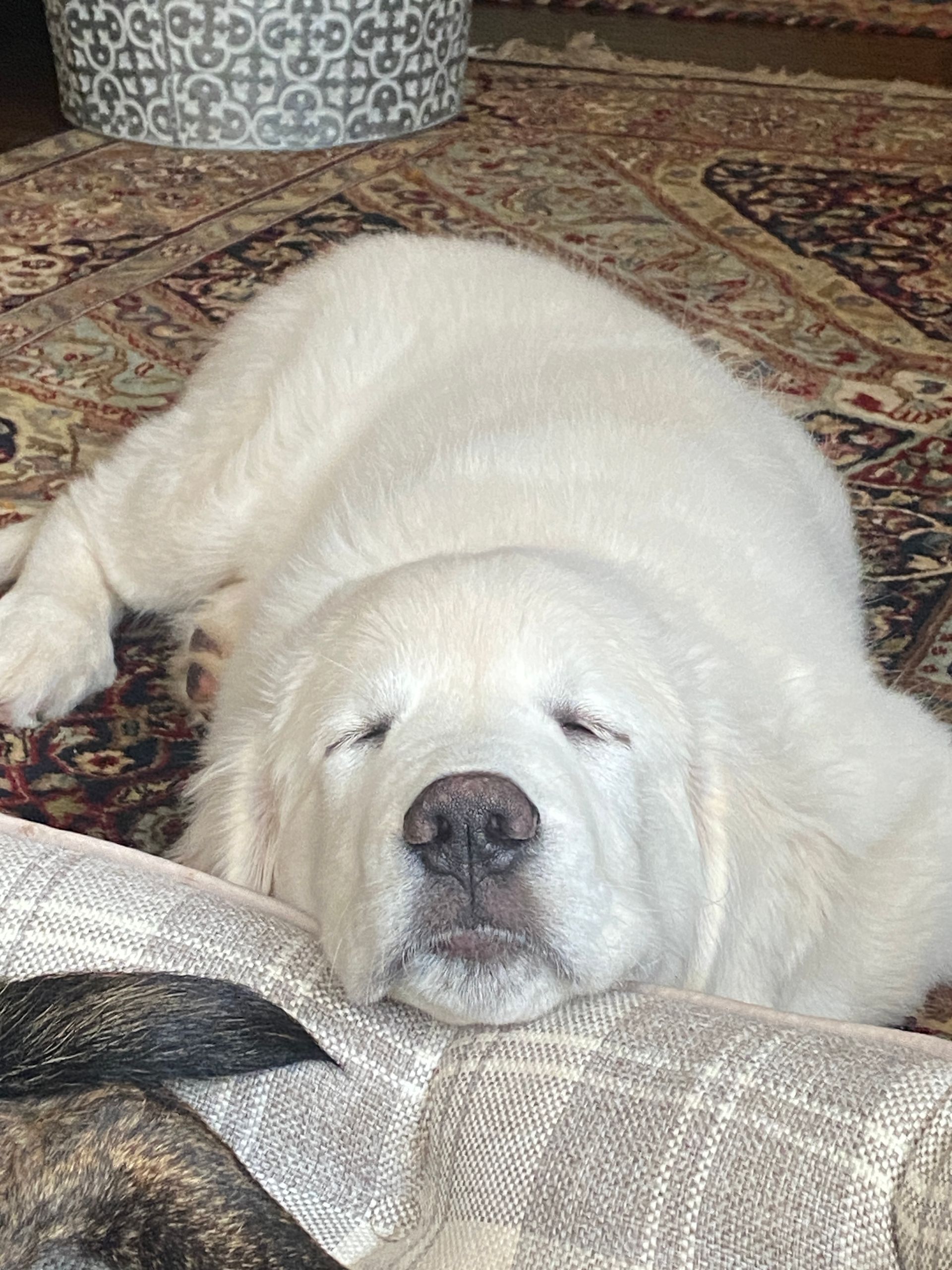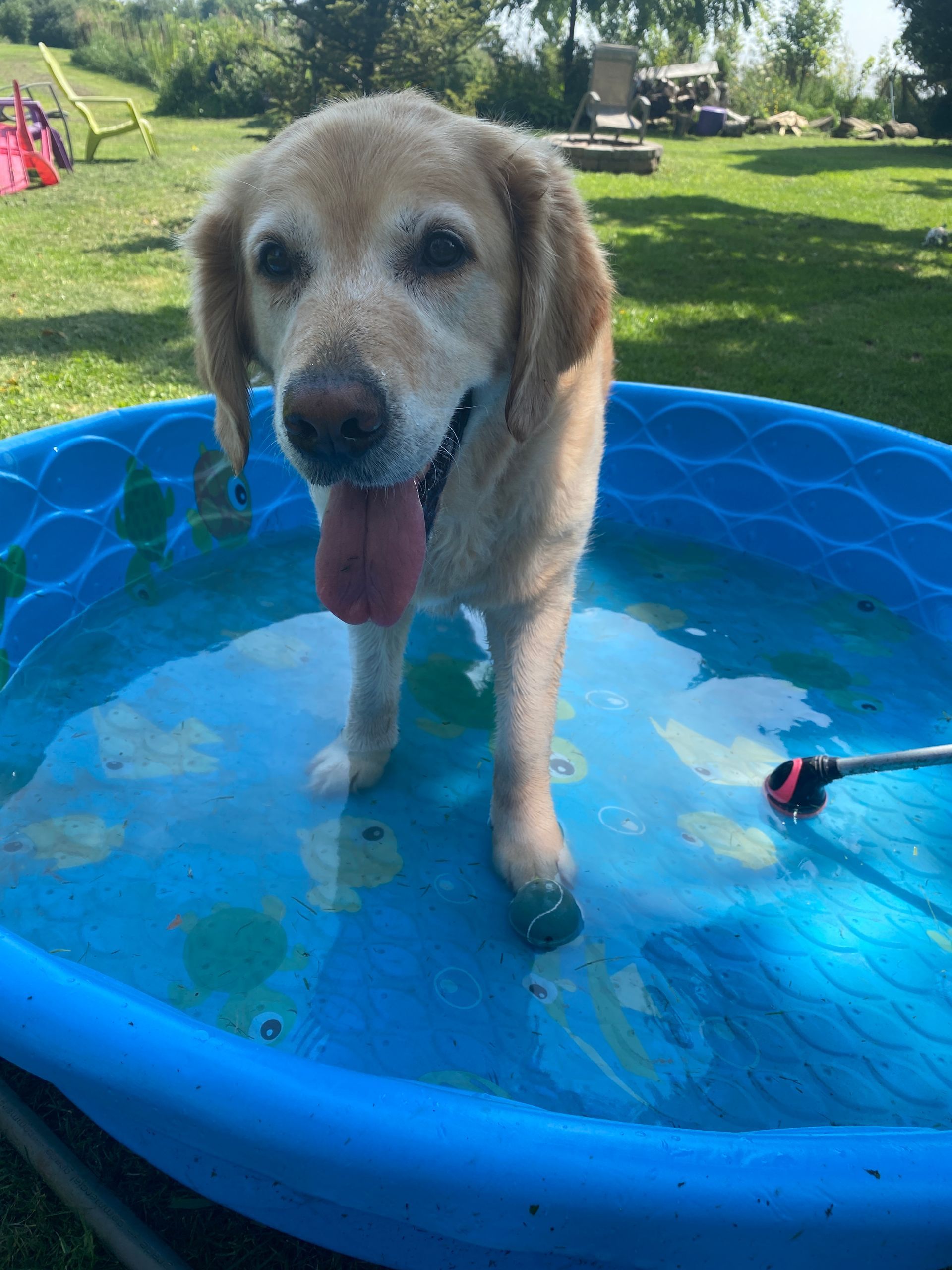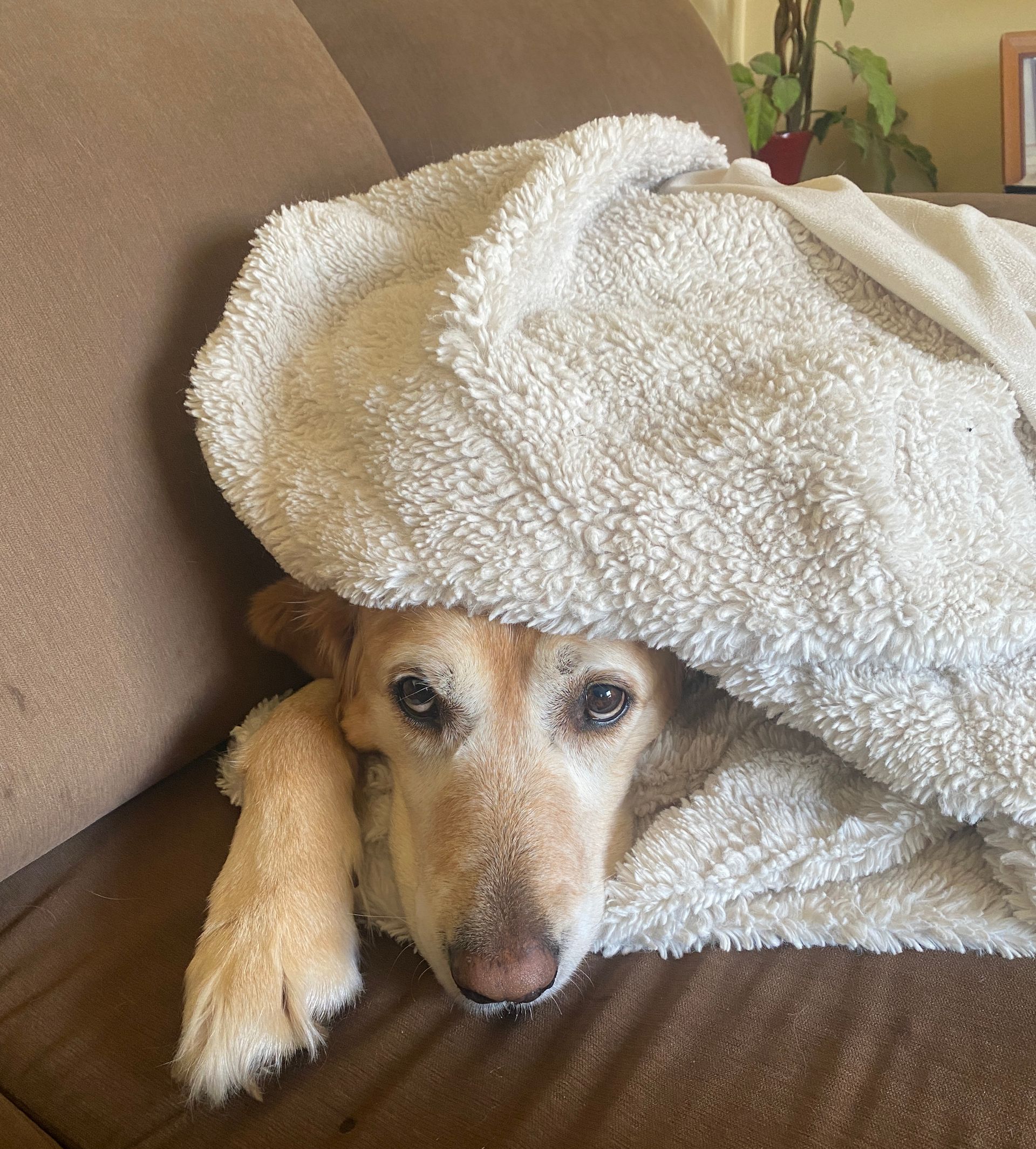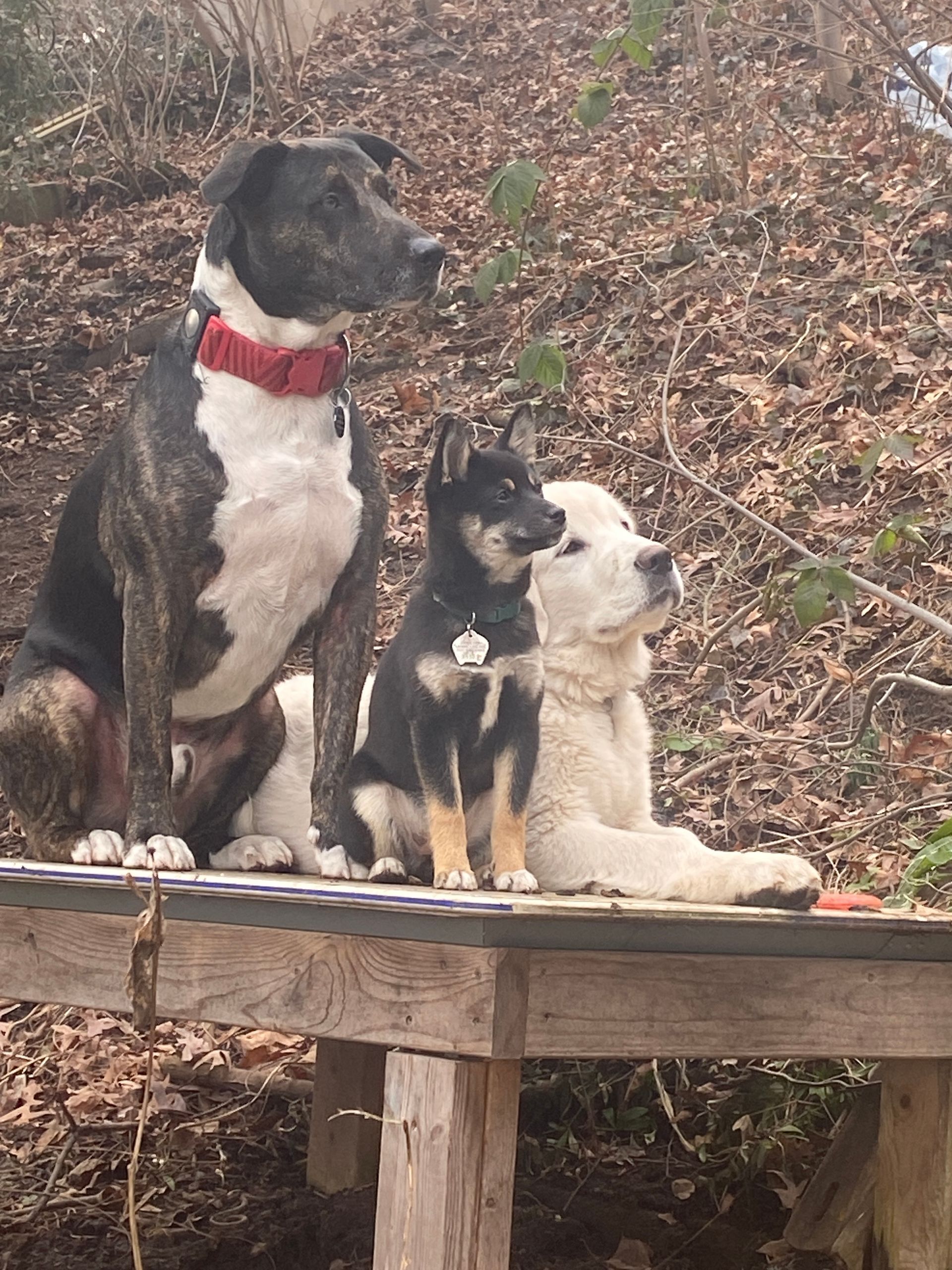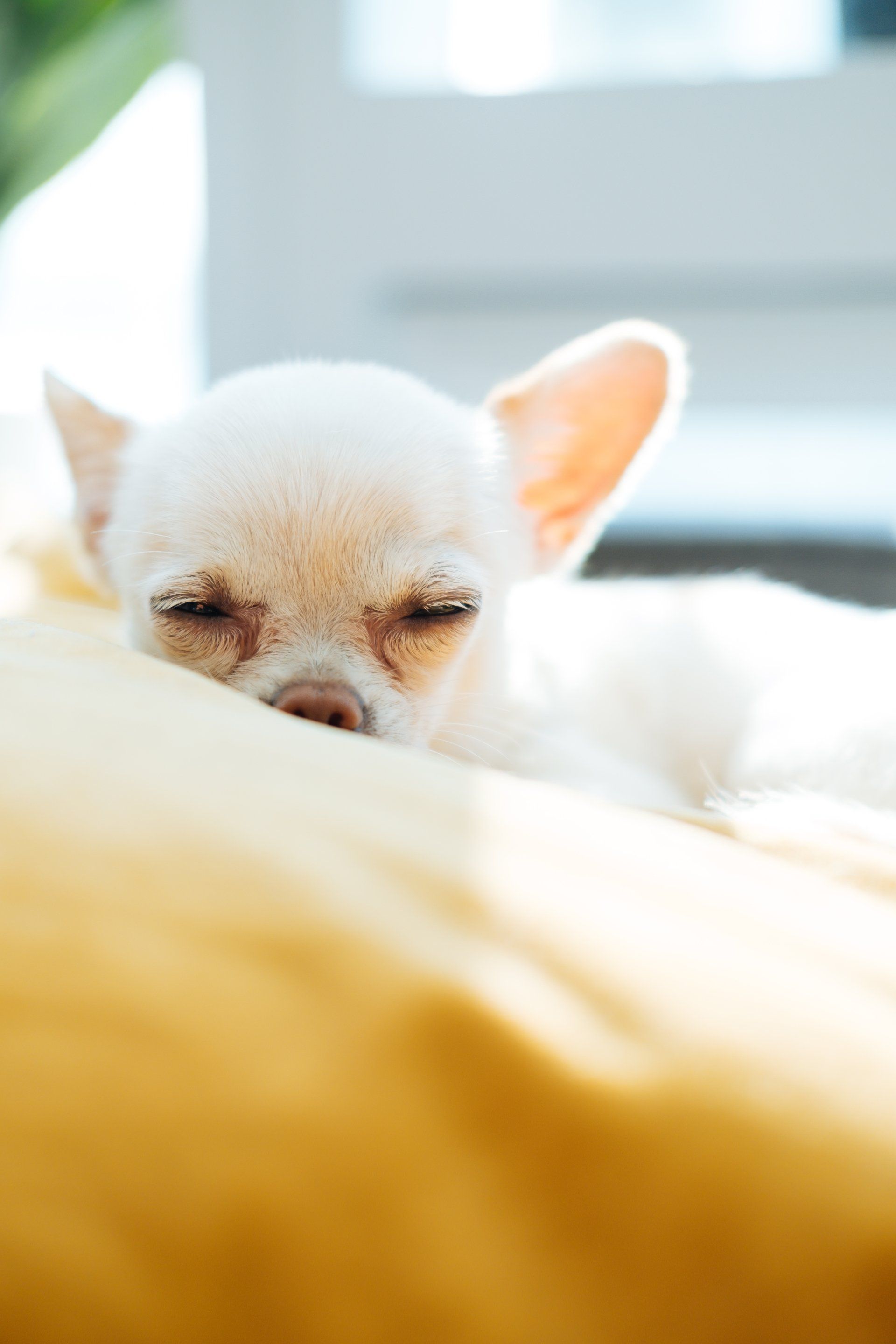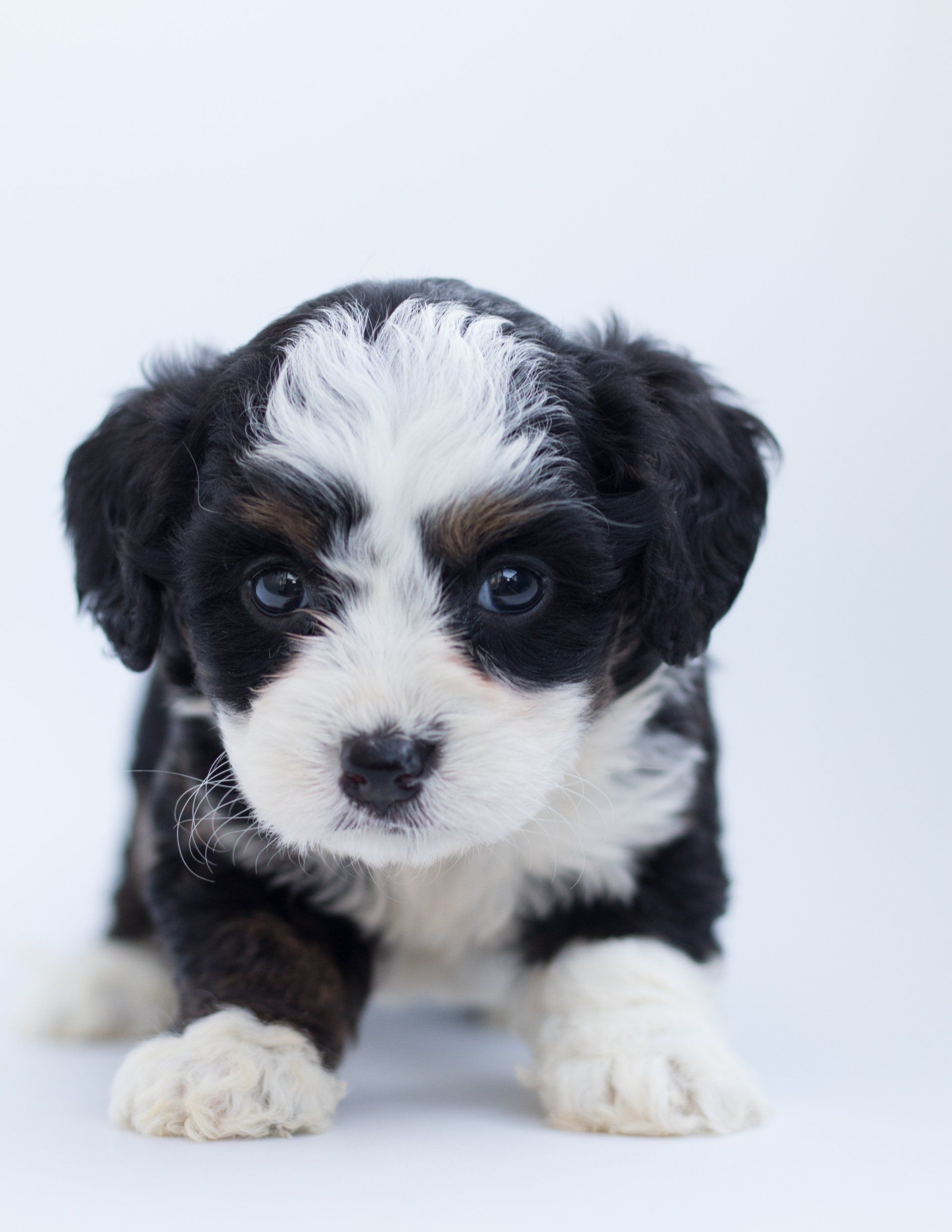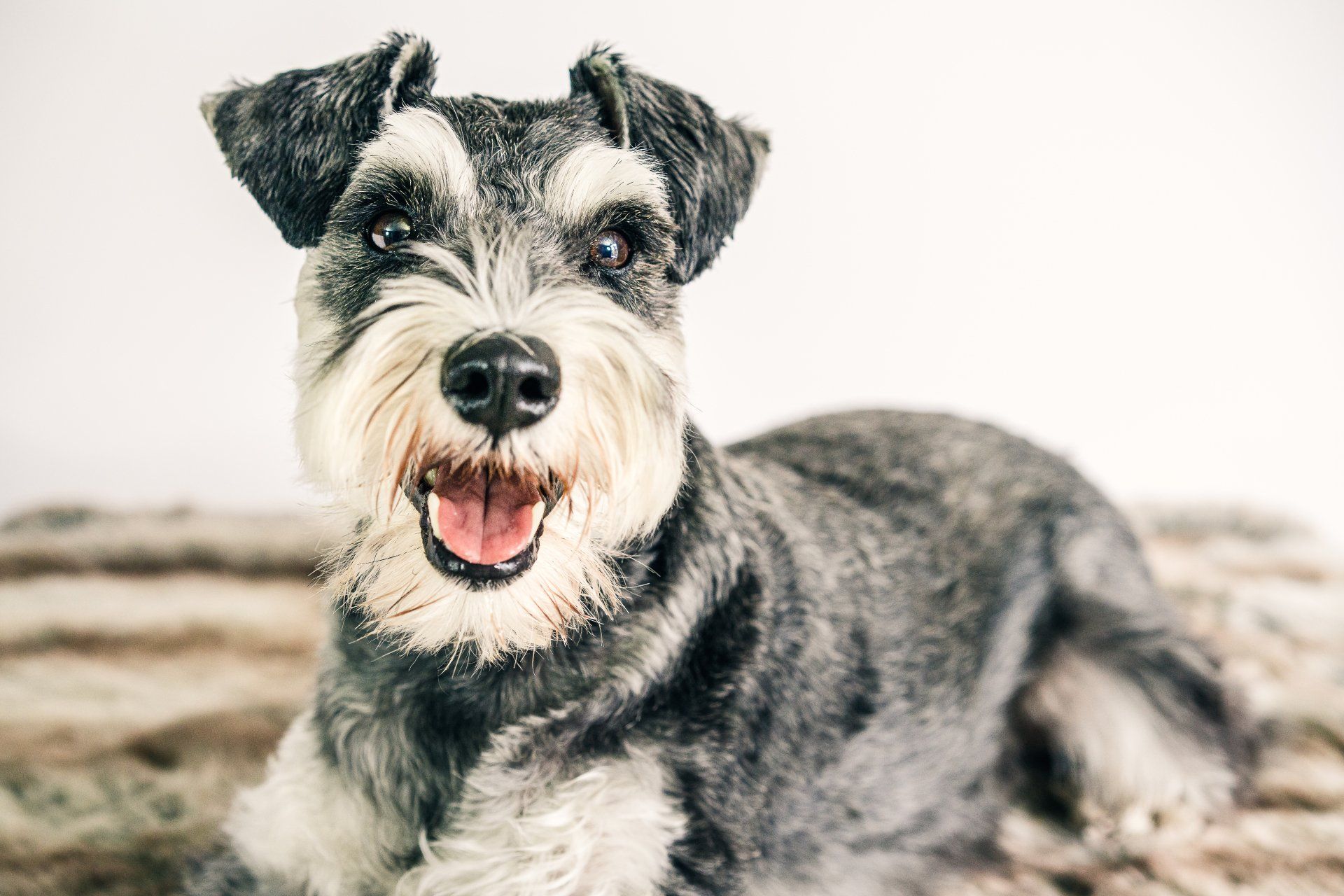Games 4 Dogs
How Old Should A Puppy Be To Start Training?
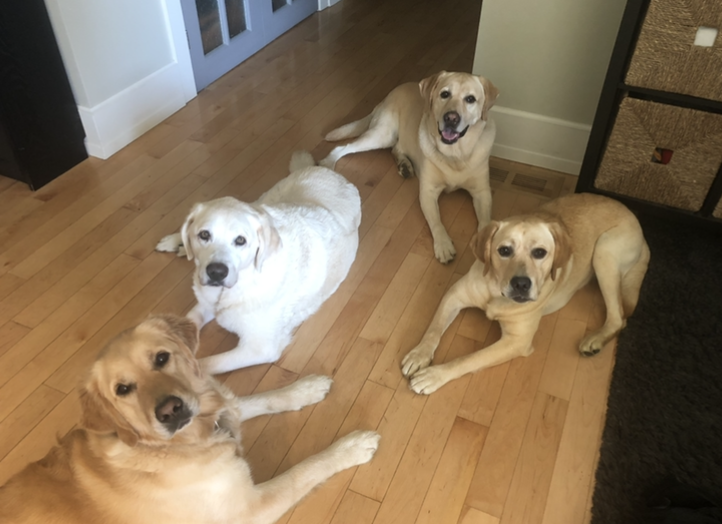
Puppies can start training as early as 8 to 12 weeks old. Early training is crucial as it establishes a solid foundation for good habits and socialization skills. As a professional dog trainer, I make this suggestion based on experience and because this is when puppies are highly receptive to learning and can quickly grasp basic commands and behaviours.
By starting at 8 weeks of age, puppies have the best opportunity to grow into well-behaved and obedient adult dogs. While early training is essential, it's also important to keep training sessions short to accommodate their shorter attention spans and prevent overwhelming them. Additionally, practicing training exercises in different environments helps puppies generalize their skills, ensuring they respond obediently in various situations.
10 Things To Train Your Puppy So You Raise the Perfect Dog
Training your puppy is essential to help them become a well-rounded and obedient companion. I have a variety of important puppy training tips, but here are 10 key areas to focus on when raising the perfect dog:
- Potty Training/House training: Basic puppy training should always start with potty training. Potty training (which can also be called house training), teaches your puppy where and when to relieve themselves, establishing a consistent potty routine and rewarding them for successful bathroom breaks. In my dog training practice, the first step in the potty training journey involves teaching the puppy to love being in their crate. Young puppies that arrive in their new home around 8 weeks old, should be taken outside every 60-90 minutes so that they begin to the potty training journey successfully.
- Crate training: Crate training is the process of training your puppy to love their crate is an important skill that really helps speed up the puppy's potty training journey. Crate training is part of my basic puppy training tips that are included with every puppy I train. Making sure that you introduce your puppy to a crate as soon as possible and make sure puppy sees it as a safe and comfortable space is the foundation for successful potty training.
- Basic commands: In my dog training practice I encourage all clients create a puppy training schedule. This schedule helps reduce the stress and overwhelm that can quickly discourage new pet parents. In terms of basic obedience, I always suggest parents start with essential commands like "sit," "stay," "come," and "down." These commands provide the foundation for obedience and safety and will help your new puppy understand what you expect from them in different situations.
- Socialization: Socialization adventurers are another part of a puppy training routine. I always suggest parents expose their puppy to as many different environments, people, animals, and situations they can to help them become comfortable and confident in different settings. Try to have puppy training sessions in different places as much as possible. Puppy socialization classes when lead by a professional dog trainer is one of the best investments you can make in your puppy's future. A new puppy can learn to make positive associations with new people, new places, new noises as long as puppy parents progress gradually and watch for obvious signs of fear.
- Bite inhibition is a fundamental aspect of puppy training that focuses on addressing biting, nipping, and mouthing behaviours. It is crucial to start training your puppy in bite inhibition as soon as their nipping and mouthing becomes uncomfortable or painful for people. By teaching your puppy to have a soft mouth and control their bite strength from an early age, you are setting the stage for a future filled with enjoyable and rewarding experiences. With new puppies, timely bite inhibition training will mean more freedom to interact with new people, explore new places, and engage in various activities without causing harm. This positively enhances puppy's life exponentially!
- Leave it/drop it: Once your puppy understands the basic obedience commands, I always encourage puppy parents to start training the puppy to release items they have in their mouth on command. Not only does this avoid nipping and mouthing incidents, it also helps puppy learn to avoid picking up or chewing on inappropriate objects like sticks and shoes.
- Leash Manners: Leash training is an invaluable investment in your puppy's future, and it requires a series of foundational steps to achieve success. A professional dog trainer understands the significance of this training aspect and can guide you through the process. It's crucial to address any inadvertent encouragement of lunging and pulling on the leash by not allowing the puppy to continue with such behaviors. By establishing clear boundaries and consistent leash training techniques, you can teach your puppy to walk calmly on a leash, promoting a safer and more enjoyable walking experience for both you and your canine companion.
- Handling and grooming: Handling and grooming are essential components of basic puppy training, ensuring that your furry friend becomes comfortable with being touched and groomed. It's crucial to dedicate at least five minutes each day to handle and groom your new puppy. During these sessions, gently touch their paws, ears, nails, and tail, gradually increasing their tolerance to these sensations. Pairing this handling with positive reinforcement, such as high-value treats, can lead to swift and gratifying progress. By consistently implementing these techniques, you can quickly achieve success in acclimating your puppy to handling and grooming, fostering a positive and stress-free experience for both you and your pup.
- Polite greetings: Training your puppy to greet people and other dogs calmly, without jumping up or displaying excessive excitement is an important skill. Using puppy basic cues like "watch me", "sit", "down" and "stay", consistently helps puppies learn at a young age how to greet people politely.
- Distraction training: In my dog training practice, distraction training is always paired with obedience training. Using puppy basic cues like "watch me", "sit", "down" and "stay", consistently helps puppies learn to focus on you and respond to commands even in the presence of distractions.
Basic Puppy Training Timeline
A basic puppy training timeline provides a general outline of the key milestones and training goals you can aim for as your puppy grows. While every puppy is unique, and individual progress may vary, here is a rough guideline to help you understand the typical progression of puppy training:
8-12 weeks of age: This is the ideal time to start training your puppy. Focus on basic instructions like sit, stay, come, and lay down and try not to repeat the same word more than three times in a row. Begin crating and potty training and introduce them to handling and some socialization adventurers.
3-4 months: Continue reinforcing older commands and continue to teach your puppy new combination commands and training classes that improve their reliability and predictability. Expand their socialization experiences by introducing them to new environments, people, and animals.
5-6 months: Consolidate their understanding of all of their commands and cues and start working on combining the skills together to create more advanced dog obedience skills. Try combining cues such as watch me + sit + stay or watch me + down + leave it. Additionally, address any nipping, teething and chewing issues by redirecting their attention to appropriate toys and bones.
7-9 months: Reinforce previous training and work on refining their obedience skills in a controlled environment in many different areas. Introduce more complex commands and increase duration and the number of distractions during training sessions. Emphasize good behavior and continue providing as much positive reinforcement as possible in various environments.
10-12 months: Focus on fine-tuning their obedience skills and reinforcing good manners. Continue socialization efforts and expose them to different situations, sounds, and stimuli. Monitor their energy levels and adjust training intensity accordingly.
Beyond 1 year: I believe strongly in continuing training throughout a dog's entire life however. I often suggest that pet parents consider reminder obedience training, continued socialization adventures and/or participation in dog sports or activities based on the interests and abilities of pup and parent so that the pup continues to be around confident adult dogs and other puppies.
Bringing a new puppy home at the tender age of 8 weeks can be an exciting and overwhelming adventure. It's essential to recognize that proper puppy training is vital for their development, and enrolling them in puppy class can be a game-changer.
A professional puppy trainer, like me, who teaches in a structured class-like environment not only offers guidance but also provides opportunities for socialization with other puppies. With positive reinforcement training techniques, such as the use of puppy treats, basic training becomes an enjoyable experience for both you and your furry friend.
Together, you establish a strong foundation for obedience and good behaviour. By investing in a puppy class or two and incorporating treats into training sessions, you create a positive learning environment that promotes bonding, social skills, and a well-behaved puppy who will grow into a happy and well-adjusted adult dog.
5-Minute Mini Lessons To Build A Strong Bond With A New Puppy
Building trust and bonding with your puppy is crucial for a strong and life-changing relationship with your companion dog. Here are some ways I teach my clients how to develop trust and strengthen the bond between you and your pup:
- Spend quality time together: Dedicate regular and uninterrupted time for activities that you both love. This allows your puppy to associate you with positive experiences and builds a sense of security. When my puppy first arrived, I paid close attention to what they enjoyed doing most and then I socialized them and developed their skills so we could enjoy those activities together. In my life that turned into a lifetime of activities like playing fetch, hiking, camping, swimming, cuddling, and gentle grooming sessions. Start early and use 5-minute mini lessons to create positive associations with the activity. Now at 8 years of age, my pup and I enjoy a variety of activities together.
- Use positive reinforcement: Reward good behavior when it appears naturally during your time together. Use 5-minute lessons to reward their great behaviour with praise, treats, and affection. Positive reinforcement helps create a positive association with you and encourages your puppy to trust and seek your approval.
- Establish a consistent daily routine: Consistency in daily routines, including feeding, exercise, and sleep schedules, helps your puppy feel secure and builds trust. Over time, this predictability and structure provide a sense of stability and reliability. In my home, my day begins with a leisurely hike with my dog and a short game of fetch, two activities that we both enjoy together.
- Provide a safe and nurturing environment: Finding or developing activities that you can enjoy together is one of the greatest parts of having a pet dog. Start as soon as possible to create a safe and comfortable space for your puppy, ensuring they have access to their bed or crate, toys, and a designated potty area. A secure environment promotes a sense of trust and allows your puppy to feel protected.
- Build calmness into your life together: Dogs are highly attuned to human emotions. If your house is quite busy and noisy, it's important to have a calm and positive space where your pup can learn to relax and snooze or watch the world calmly. This type of environment creates a relaxed and trusting atmosphere where your pup learns to relax calmly and self-entertain or snooze.
- Practice gentle handling and touch: Gradually introduce your puppy to being handled all over their body, including their paws, ears, and mouth. Use gentle touch and positive voice tones to associate handling with pleasant experiences, promoting trust and cooperation.
- Engage in training and mental stimulation: Participating in exercise, play and mental stimulation activities, such as puzzle toys or scent games, strengthens the bond between you and your puppy. It also fosters trust by promoting clear communication and mutual understanding.
- Respect boundaries and build confidence: Recognize your puppy's individual personality and preferences. Respect their need for personal space and allow them to approach new experiences at their own pace. Encourage and support their exploration, building their confidence and trust in you as their guide.
- Be a consistent source of love and care: Above all, show your puppy unconditional love, care, and attention. Be there for them in times of fear or uncertainty, providing reassurance and support. Make sure your training is consistent as is your presence and affection create a strong foundation of trust and bonding.
FAQ's and Common Questions
Q1. How do I keep my puppy engaged and focused on me?
A1. To keep your puppy engaged and focused on you, use positive reinforcement techniques such as rewards, treats, and praise when they pay attention to you or respond to commands. Keep training sessions short, fun, and interactive, incorporating games and varied activities to maintain their interest.
Q2. How often do I take my new pup out for potty breaks during the day?
A2. As a general guideline, take your new puppy out for potty breaks every 1 to 2 hours during the day, especially after meals, naps, playtime, and waking up from sleep. Gradually extend the time between breaks as your puppy develops better bladder control.
Q3. My pup is learning impulse control really slowly. What else can I do to help him learn?
A4. If your puppy is learning impulse control slowly, you can incorporate impulse control exercises into their daily routine. Start with simple tasks like having them wait for their food or a treat before giving it to them. Gradually increase the difficulty by asking for longer waits or introducing distractions. Consistency and patience are key in reinforcing impulse control behaviours.
Q4. How can I help my puppy walk politely in his new environment?
A4. To help your puppy walk politely in their new environment, practice loose leash walking techniques. Reward your puppy for walking by your side without pulling, using treats or praise. Start in a quiet and familiar area, gradually progressing to more challenging environments with distractions. Be patient and consistent in reinforcing desired behaviour.
Q5. How can I effectively potty train my puppy in 4 weeks or less?
A5. Begin training right away! Effective potty training involves establishing a consistent routine, taking your puppy outside frequently (especially after meals, naps, and waking up), providing rewards and praise for eliminating outside, and supervising closely indoors to prevent accidents right from the first day they entered your home. Use confinement in a crate or a designated area when you cannot actively supervise them and the journey is usually accomplished in 4 weeks or less..
Q6. How do I use a food lure?
A6. To use a food lure, hold a treat close to your puppy's nose and guide them into performing a desired behaviour (such as sitting or lying down). Gradually reduce the reliance on the treat by incorporating verbal cues and rewarding with treats intermittently for successful responses.
Q7. My new puppy has sharp teeth. How do I fix his biting and his other bad behaviour?
A7. To address biting and other bad behaviour, redirect your puppy's attention to appropriate toys or chews when they engage in inappropriate biting. Consistently discourage and ignore biting behaviour, as well as provide positive reinforcement for calm and gentle behaviour. Seek professional guidance if the behaviour persists or becomes concerning.
Q8. What are some tips for crate training my puppy?
A8. When crate training your puppy, create a positive association with the crate by providing comfortable bedding, treats, and toys inside. Gradually increase the duration of time your puppy spends in the crate, starting with short periods and gradually extending them. Use positive reinforcement and never use the crate as a form of punishment.
Q9. What is body handling and why is it important?
A9. Body handling refers to getting your puppy accustomed to being touched and handled all over their body. It is important for grooming, vet visits, and overall comfort. Start by gently touching different body parts and gradually increase the level of handling. Pair the handling with rewards and praise to create a positive association.
Q10. What are basic manners?
A10. Basic manners refer to teaching your puppy behaviors like sit, stay, come, and leave it, among others. These manners help create a well-behaved and polite dog that can interact positively with people and other animals.
Q 11. My neighbour's dog has all their vaccinations, can my 8 week old puppy play with her?
A11. It's generally recommended to wait until your puppy has completed their vaccination series before socializing them with other dogs, including your neighbor's fully vaccinated dog. Consult with your veterinarian for guidance on appropriate timing and safe socialization practices.
Q12. Is a dog park dangerous for my young pups?
A.12 While dog parks can provide opportunities for socialization, they can also pose risks for young pups. The environment may be overwhelming, and there's a potential for exposure to infectious diseases. It's best to consult with your veterinarian and consider other controlled socialization options until your puppy is fully vaccinated.
Q13. My puppy starts crying at 5 am. What should I do?
A13. If your puppy starts crying at 5 am, it's important to assess if they need to go outside for a potty break. Take them out and keep the interaction calm and quiet. Avoid engaging in play or other stimulating activities during this time to reinforce the idea that it's still nighttime. Gradually adjust their feeding and sleeping schedule to encourage

